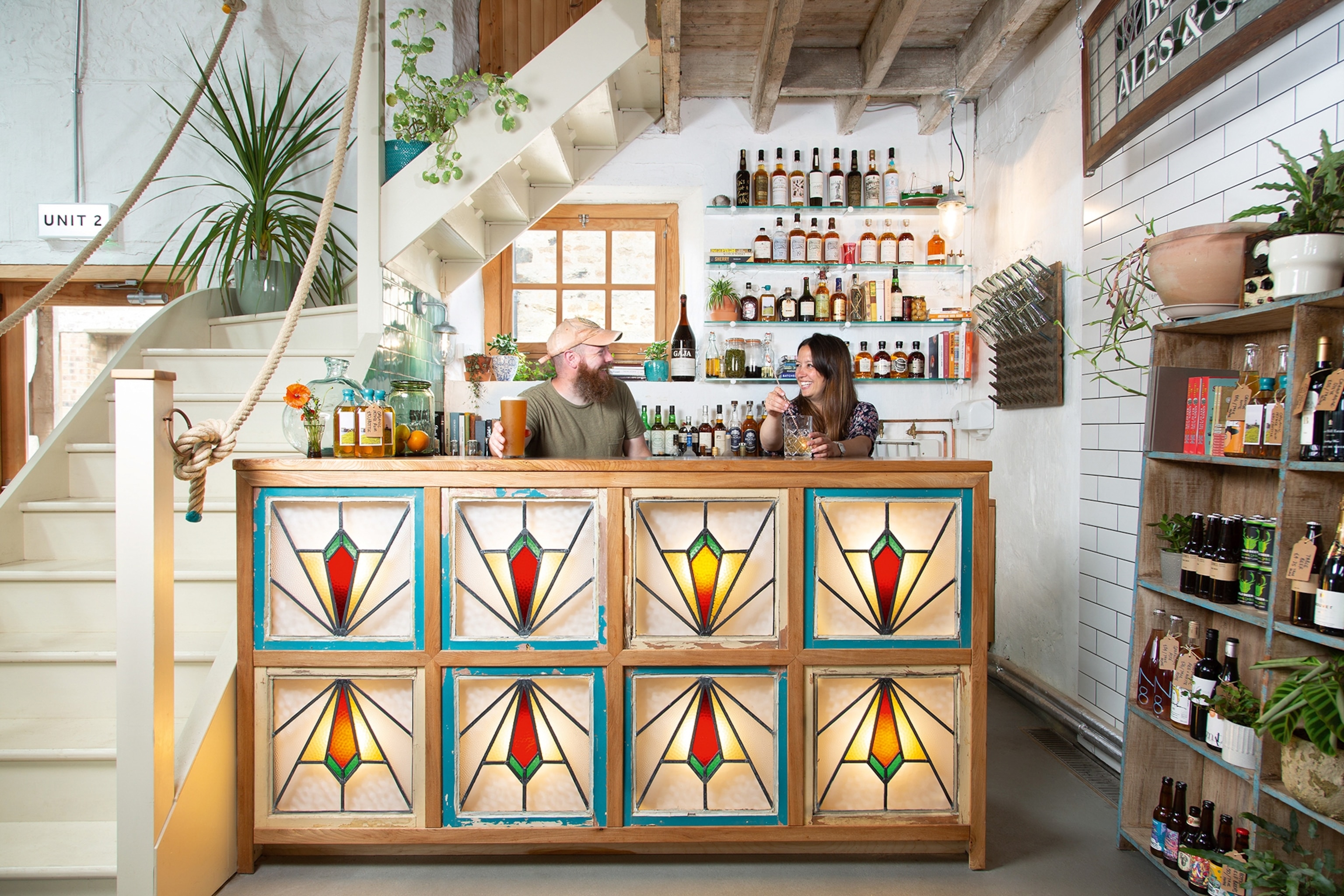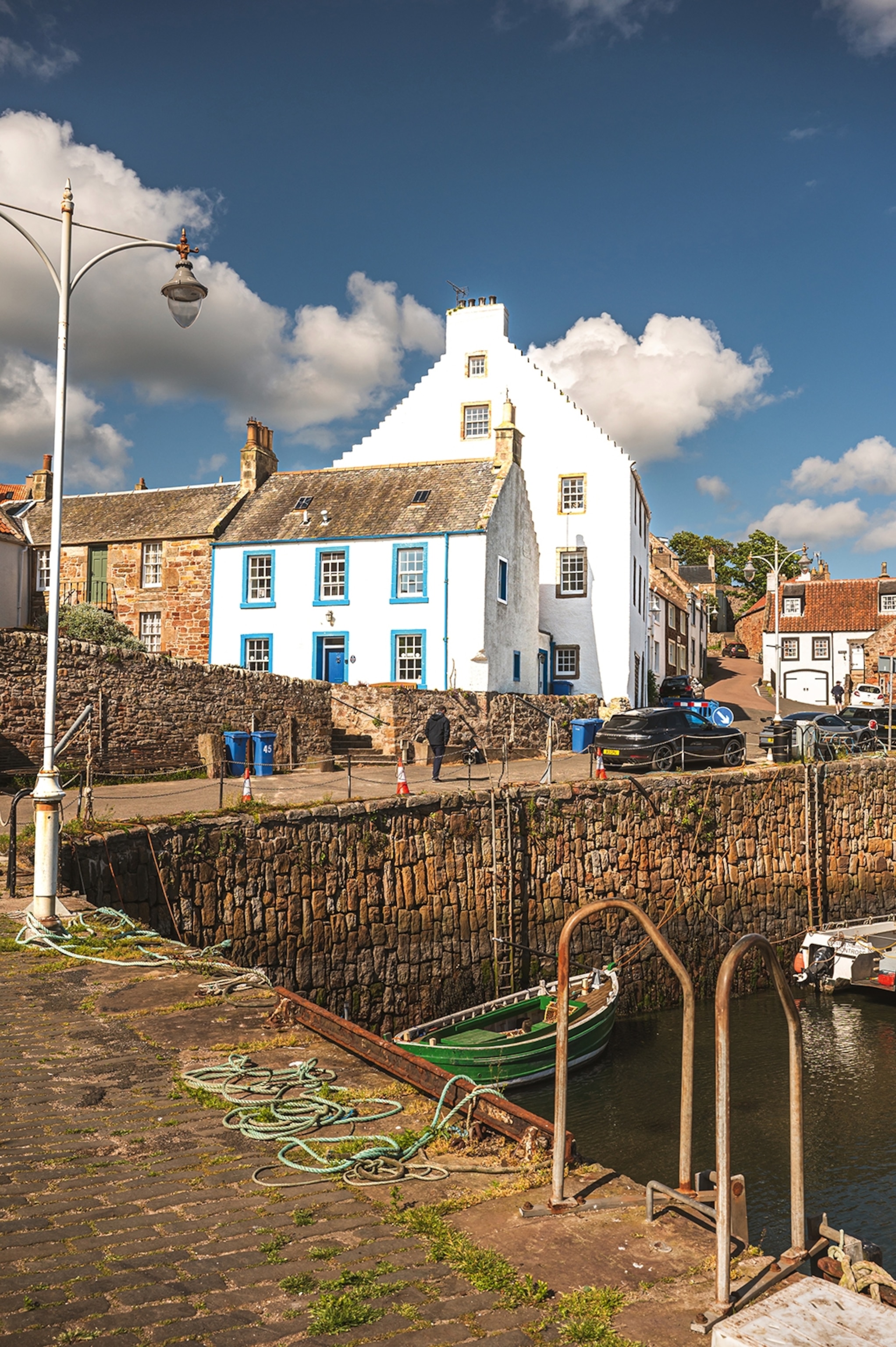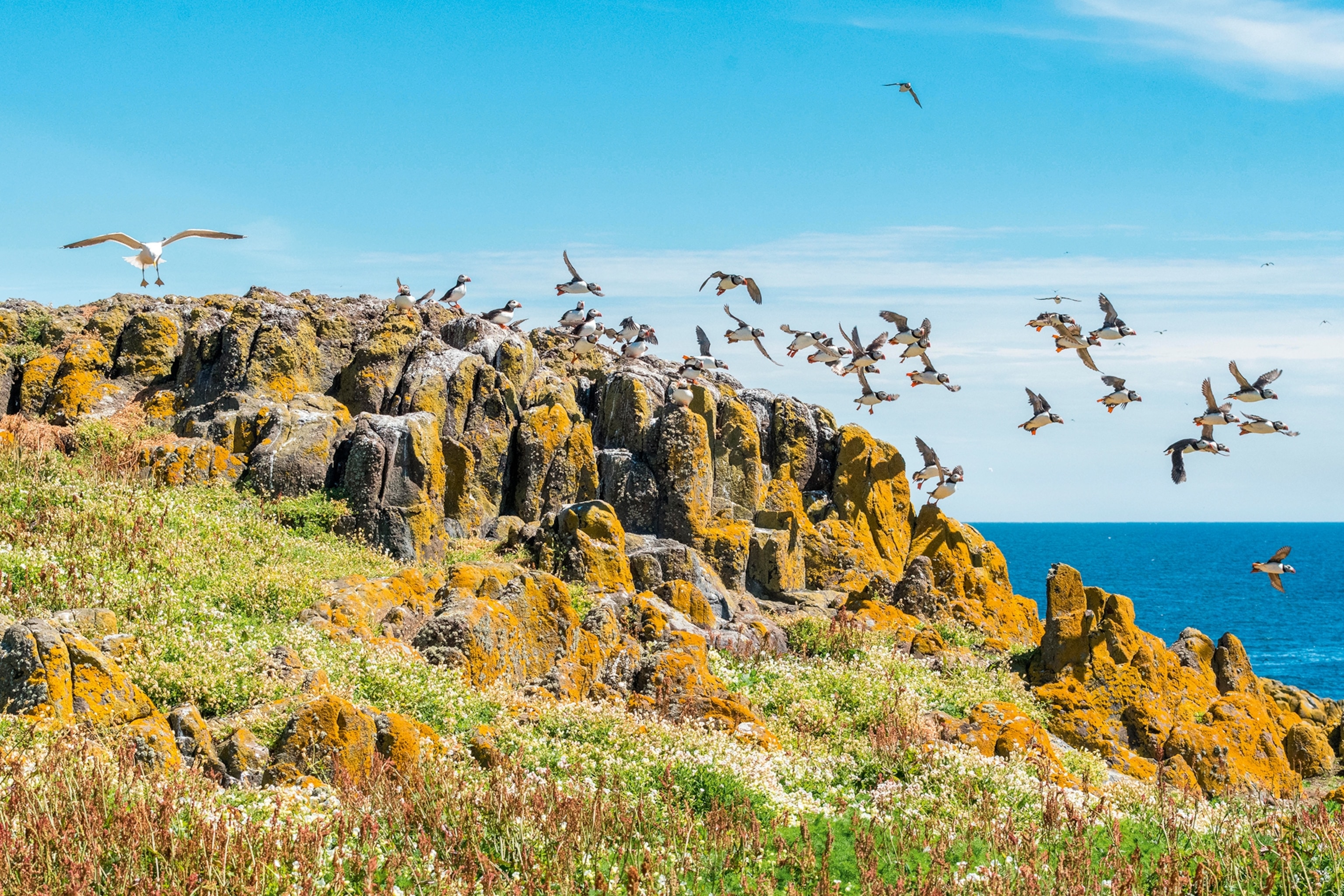This article was produced by National Geographic Traveller (UK).
Named after the Scots word for ‘nook’, the region of East Neuk is an arc of blustery beaches and volcanic cliffs in east Scotland. Its villages seem to sprout from the seaweed, blurring the line between land and sea. It’s a place built on fishing, where, between the 15th and 20th centuries, ships from mainland Europe swept into harbours to snap up barrels of salted herring. People, too, flowed along these trade routes — particularly Flemish artisans, who added Low Countries flair to the architecture.
Today, there are more pleasure boats than fishing boats, but the East Neuk’s free-spirited nature finds new expression in art galleries and open-air sculptures. The villages have watercolour-box houses, while the marriage of Fife farming heritage and the teeming Firth of Forth estuary makes for unparalleled, straight-off-the-boat seafood dining.
This region is also arguably home to the best section of the 117-mile Fife Coastal Path, and a train link from Edinburgh to nearby Leven, opened in 2024, means you can leave the car at home and let your coastal adventure unfold on foot. In this nook, you won’t want to cut corners.

Futtle Organic Brewery is in Anstruther, the largest village in East Neuk.
Photograph by Bowhouse
Day 1: Waves & wynds
Morning
Pastel-hued St Monans is part fishing village, part living art installation. Along the seaside walkway, bloom-filled welly-boot planters sit alongside artfully scattered lobster pots, and windows display little coastal-scene vignettes. The area’s 13th-century Auld Kirk is said to be the closest church to the sea in Scotland.
Walk the 1.6-mile St Monans to Pittenweem section of the Fife Coastal Path, keeping an eye out for cormorants and grey seals in the Firth of Forth. Along the way, you’ll pass St Monans Windmill, which lords over the lichen-furred husks of 18th-century salt pans. After almost a mile, march up a grassy knoll to your left and peep through the brambles to get a view over the beach and harbour at Pittenweem.
Afternoon
Pittenweem’s continental-style red roofs came from 17th-century Flemish ships, which dropped off terracotta tiles in exchange for wool, coal and salt. Though the village is best known for its annual art festival, many galleries stay open year-round. Meander up and down its flower-strewn wynds (narrow lanes), each one the subject of a myriad paintings. At the top of Water Wynd, stop for a black pudding roll at the Clock Tower Café. After, visit Nicholson’s Sweets & Ice Cream Shop for Scottish tablet ice cream and clootie dumpling (fruit pudding) flavoured fudge. Before rejoining the path, drop by St Fillan’s Cave: a tiny, 7th-century former chapel in a naturally carved cave on Cove Wynd.
Evening
Passing through banks of coconut-scented yellow gorse, you’ll wind down to a white beach made of thousands of cockle shells. Keep along this 2.2-mile section of coastal path until Anstruther, the East Neuk’s largest village, looms into view. One of the first buildings you’ll come to is the sand-coloured Dreel Halls: Anstruther’s former parish church, ringed by intriguing memento mori.
Wander further east to the main strip. The Anstruther Fish Bar put the village on the map when it won UK Fish and Chip Shop of the Year in 2008, but many locals now prefer The Wee Chippy, which quietly won a clutch of awards last year. Take your fish supper to the waterfront to watch boats bobbing in the harbour.

Crail is considered one of the East Neuk’s prettiest villages.
Photograph by Epic Pictures, The Shoregate
Day 2: Boats & braes
Morning
Anstruther was once Scotland’s biggest fishing port; this history is rendered in extraordinary detail at the Scottish Fisheries Museum. The stone-and-timber buildings that house it have their own stories, from the 16th-century abbot’s lodging to the 1930s Smith and Hutton boatyard.
On leaving the museum, stroll through the adjoining village of Cellardyke and beyond, past flapping laundry lines and mop-headed Highland cows. After about two miles, you’ll meet a sandstone outcrop known as the Caiplie Caves; in the furthest right cave (facing west), you’ll see Pictish symbols and Christian crosses etched into the rock face. Some may date as far back as the 1st century.
Afternoon
Crail is often considered the loveliest of all the East Neuk villages. It’s home to a sweeping stone harbour and the 12th-century Crail Castle, of which a section of wall remains. Grab lunch at the seafood hut by the harbour: since 1974, the Reilly family have been serving up lobster rolls, dressed crabs and reasonably priced whole lobsters.
Next, head up the hill to Crail Pottery, established by Stephen and Carol Grieve in 1965 and now managed by their children and grandchildren. Their homewares and ornaments capture the coastal character, whether through literal fish and lobster motifs or the application of reactive glazes that sparkle like the sea.
Evening
Take a sunset stroll along Crail’s beach, designated a Site of Special Scientific Interest (SSSI). When the tide recedes, it reveals the stumps of 330-million-year-old trees and the many footprints of Arthropleura: a giant Carboniferous millipede that grew up to 8.5ft long.
For dinner, head to The Shoregate: a brilliant boutique hotel that opened in 2022 in a 18th-century inn. Head chef Craig McAllister presents a seasonal menu of Scottish produce including Shetland mussels and Arran mustard. Dishes might include his butter-soft signature gravadlax or venison medallions with red cabbage choucroute. Stay the night in one of the hotel’s colourful, sea-view suites.
Along the Fife Coastal Path
Lower Largo to Elie
Though technically just outside the East Neuk’s bounds, the former fishing village of Lower Largo has the same artsy character. It’s also the birthplace of sailor Alexander Selkirk, whose four years from 1704 as a castaway on a Chilean island is said to have inspired Daniel Defoe to write Robinson Crusoe. Plus, it has a fantastic hotel. The Crusoe opened in 2021 on Lower Largo Harbour; its seven rooms have a muted coastal theme and nods to Selkirk throughout. Walk to the 16th-century village of Elie the next day: the route is around six miles and includes one of the coastal path’s most arresting sections, passing over the tousled marram dunes of Dumbarnie Links Nature Reserve and the black sea cliffs at Kincraig Point.
Elie to St Monans
One of Fife’s finest restaurants-with-rooms is The Ship Inn, which overlooks Elie beach. Stop here for a seafood lunch. They make extensive use of the native larder, with St Monan’s haddock, scallops or East Neuk Kilnhouse smoked salmon likely to appear.
Walk off lunch by going east along the coastal embankment. Marooned on a windswept headland, you’ll find a lighthouse and the 1770 Lady’s Tower viewpoint. From here, step down and continue your walk along Lady’s Tower Beach: a stretch of sand daubed with smudges of gleaming volcanic rock. In total, it’s 3.4 miles to St Monans village; just before reaching it, you’ll pass the 15th-century Newark Castle, now mostly tumbled into the sea.

Puffins breed on the Isle of May from around April to August each year.
Photograph by Kay Roxby, Alamy Photo
Isle of May
Pleasure cruises to this national nature reserve depart from Anstruther most days from April to September. If you’re lucky, you’ll spend the 45-minute journey flanked by bottlenose dolphins and minke whales; closer to the reserve, you might start passing puffins. Finally, a thunderous swell propels you into a volcanic amphitheatre with an audience of grey seals.
The endearingly clumsy puffins are the main draw — there are as many as 104,000 of them here — but they share the island with thousands of fulmars, guillemots and eider ducks. The landscape is spectacular, too — particularly around the southwestern viewpoints, where wildflower-tufted cliffs splinter into black basalt columns.
How do to itBoard the train from London to Leven, changing at Edinburgh Waverley. From there, take a taxi or the hourly X60 bus, which stops at Elie, St Monans, Pittenweem and Anstruther.
Inntravel offers a selection of walking-led itineraries around the East Neuk, from £600 per person including B&B accommodation, some transfers and detailed, step-by-step notes for self-guiding.
This story was created with the support of Inntravel, The Ship Inn and The Shoregate.
Published in the September 2025 issue of National Geographic Traveller (UK).
To subscribe to National Geographic Traveller (UK) magazine click here. (Available in select countries only).
